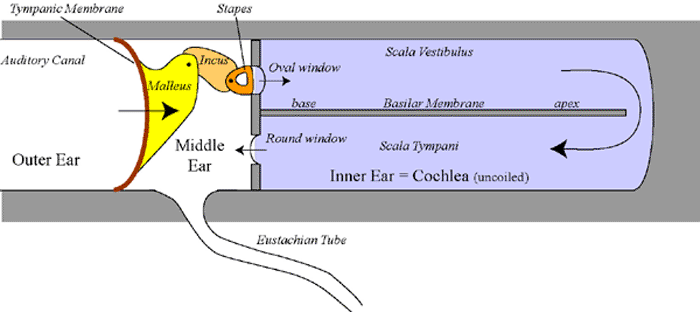|
The basilar membrane will vibrate when the fluid in the upper and in the lower scala's vibrate. But the basilar membrane is not the same (homogeneous) along its length. Rather, it contains fibers that are short and stiff in the base and long and slender in the apex. Therefore, the basilar membrane will vibrate more at the base when the sound has a high frequency. Lower frequencies are better detected in the basilar membrane in the apex.
So, in short:
- high frequencies are best detected at the base
- medium frequencies are best detected in the middle
- low frequencies are best detected close to the apex
This has really become a frequency analyzer! (just like the led's in your radio or music player) |
